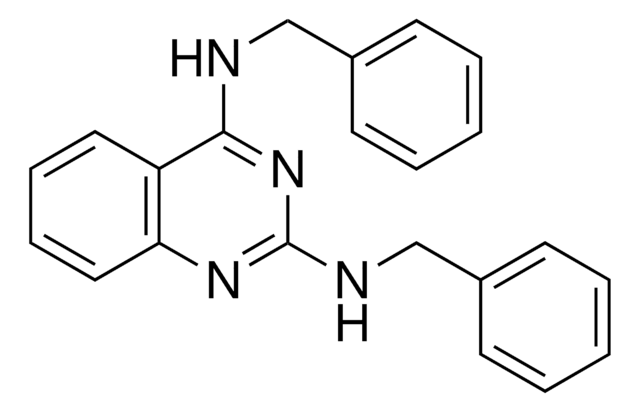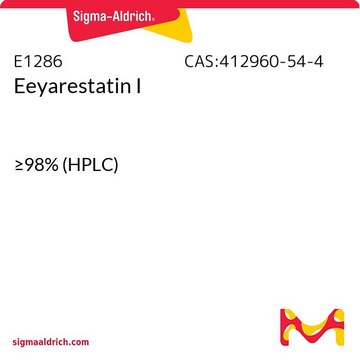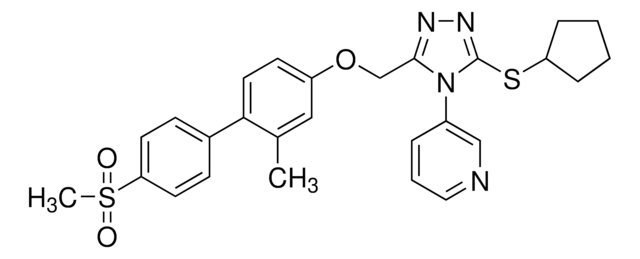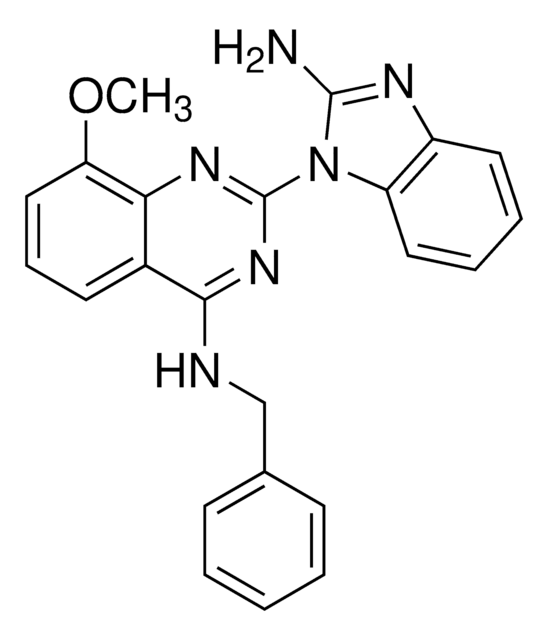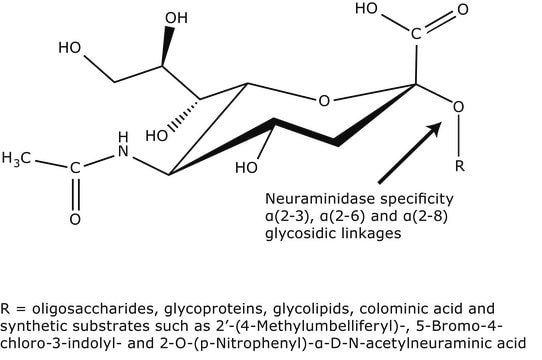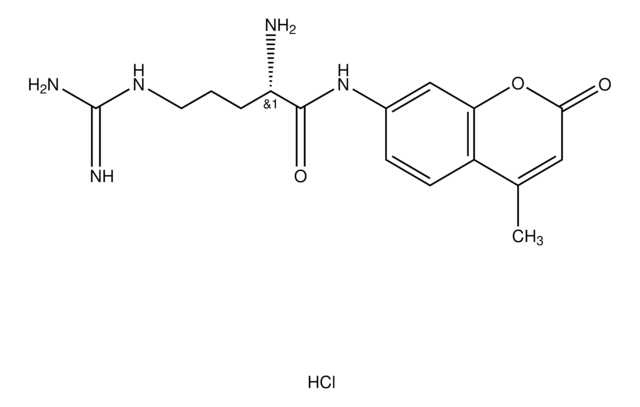324521
Eeyarestatin I
A cell-permeable oxo-imidazolidinyl-hydroxyurea that localizes to ER, where it interacts with AAA ATPase p97 via its nitrofuran-containing moiety, without exhibiting affinity toward Hsp70 / ATPase NSF
Synonym(s):
Eeyarestatin I, 1-(4-Chloro-phenyl)-3-(3-(4-chloro-phenyl)-5,5-dimethyl-1-(3-(5-nitro-furan-2-yl)-allyldiene-hydrazinocarbonylmethyl)-2-oxo-imidazolidin-4-yl)-1-hydroxyl-urea, EerI, ES1, Valosin-containing Protein Inhibitor II, VCP Inhibitor II, ERAD Inhibitor II, p97 Inhibitor II
About This Item
Recommended Products
Quality Level
Assay
≥90% (HPLC)
form
solid
manufacturer/tradename
Calbiochem®
storage condition
OK to freeze
protect from light
color
light yellow-orange
solubility
DMSO: 100 mg/mL
shipped in
ambient
storage temp.
2-8°C
InChI
1S/C27H25Cl2N7O7/c1-27(2)24(35(40)25(38)31-19-9-5-17(28)6-10-19)34(20-11-7-18(29)8-12-20)26(39)33(27)16-22(37)32-30-15-3-4-21-13-14-23(43-21)36(41)42/h3-15,24,40H,16H2,1-2H3,(H,31,38)(H,32,37)
InChI key
JTUXTPWYZXWOIB-UHFFFAOYSA-N
General description
Packaging
Warning
Reconstitution
Other Notes
Wang. Q, et al. 2010. PLoS ONE5, e15479.
Cross, B.C.S., et al. 2009. J. Cell. Sci.122, 4393.
Wang, Q., et al. 2009. Proc. Natl. Acad. Sci. USA106, 2200.
Wang, Q., et al. 2008. J. Biol. Chem.283, 7445.
Fiebiger, E., et al. 2004. Mol. Biol. Cell15, 1635.
Legal Information
Storage Class Code
11 - Combustible Solids
WGK
WGK 3
Flash Point(F)
Not applicable
Flash Point(C)
Not applicable
Certificates of Analysis (COA)
Search for Certificates of Analysis (COA) by entering the products Lot/Batch Number. Lot and Batch Numbers can be found on a product’s label following the words ‘Lot’ or ‘Batch’.
Already Own This Product?
Find documentation for the products that you have recently purchased in the Document Library.
Our team of scientists has experience in all areas of research including Life Science, Material Science, Chemical Synthesis, Chromatography, Analytical and many others.
Contact Technical Service